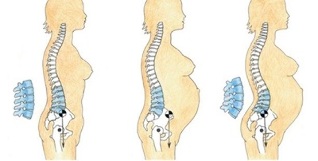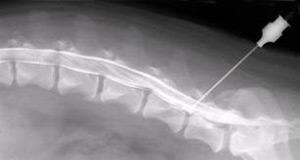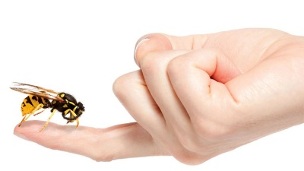
Elderly, professional athletes, as well as those whose work involves long periods without movement, sitting or standing, are often exposed to various diseases of the muscle-joint condition. Irrational daily menu, physical inactivity leads to wear, destruction of bone and cartilaginous matter. As a consequence, osteochondrosis of the lumbar spine occurs, whose symptoms and treatment depend on the personal characteristics of the organism, as well as the severity of the injury.
According to the 10th disease international classification of diseases, this disease receives the code M42. Sometimes patients are given complicated diagnoses, coding simplifies doctors' work. This small alphanumeric designation can be recorded in the medical history on the outpatient card. So, what is lumbar spine osteochondrosis? What are the reasons for its occurrence? What are the manifestations of the disease? This publication talks about everything.
Causes of lumbar osteochondrosis
Osteochondrosis of the lumbar spine usually causes injuries and a slow lifestyle. Among other things, one of the main roles is played by heredity under load, as well as the hormonal, chemical and psychogenic origin of the body.
If parents have suffered from lumbar osteochondrosis, symptoms and treatment are likely to manifest and be transmitted to their children. Having inherited the predisposing factors, offspring are also at risk of facing the disease.
The provocative factors also include the following reasons for the occurrence:
- Other diseases, such as digestive system, liver, pelvis, nervous system;
- Jump to the slowing down of metabolism;
- Changing the acid-base balance for oxidation (acidosis);
- Decreased engine power;
- Stress, nervous situations;
- Long and awkward postures, incorrect posture.
Sacral osteochondrosis often occurs as a result of hypothermia, hormonal disorders or as a result of pathological birth defects in the spine.
Symptoms of lumbar osteochondrosis
The signs of lumbar osteochondrosis are associated with the fact that spinal nerve fibers pass in the posterior area, inside the spinal canal. Depending on the location, the severity of the defeat of some roots, the manifestations of the disease differ.
In osteochondrosis of the lumbar spine, the symptoms are as follows:
- Pain syndrome- most patients complain of low back pain in osteochondrosis. The pain is local directly in the area of violation or radiates to the gluteal region, the sacrum of the leg on the side of the injury;
- Sign of tension- the pain increases with a certain posture, but when the position of the body changes, the pain abruptly disappears. The most common test used is named after the discoverer - Lasegue syndrome - the pain increases when the straight limb is lifted and disappears when the leg is bent at the knee;
- Decreased or increased sensitivity- this symptom is directly related to damage to root nerves, sensitivity is disturbed not at the pathological site, but at some distance. The patient has hypoaesthesia, hyperaesthesia or paresthesia, which is characterized by unusual projection sensations, such as chills, tingling and so on.
Often, with lumbar osteochondrosis, motor activity decreases, which is associated with muscle atrophy to varying degrees. In some circumstances, functions are limited, in other situations, paralysis and paresis occur.
In addition, lumbar chondrosis is associated with damage to the spinal vessels, with its irritation and spasm, vegetative changes appear. Blood circulation in the legs slows down, the lower extremities are constantly freezing, the skin is pale. Other organs in the lower back are often affected. Thus, with damage to the bladder, urinary incontinence develops or, on the contrary, slows down.
Stages of the disease

- 1st degree lumbar osteochondrosis is the initial type of pathology. It is characterized by a low density of intervertebral discs. The pain syndrome appears with an abrupt turn of the body, after physical effort or prolonged session.
This type of illness is common in drivers, office workers, athletes and people working in adverse climates. Pain is not characterized by acute attacks, but it develops as a dull or debilitating pain.
At this stage, people are in no hurry to go to the doctor, but use traditional methods of treatment, such as ointments, compresses. The situation leads to the fact that osteochondrosis of the lumbar or sacral spine passes to the second stage;
- 2nd degree lumbar osteochondrosis - degenerative and dystrophic disorders of the vertebral joints occur. The fibrous spinal ring is compressed as the pulpal nucleus grows and protrusion (protrusion) of the intervertebral disc occurs.
Neuropathologists define the second stage of osteochondrosis as lumbago. In other words, a lumbago occurs in the lower back when a heavy object is lifted suddenly or with other loads. This period lasts for many years, the stages of remission alternating with acute attacks of exacerbations;
- 3rd degree lumbar osteochondrosis - the protrusion of the pulp gradually increases, an intervertebral hernia forms. The patient develops the entire palette of the neurological state: constant pain, irradiation to the buttocks, abdomen, coccyx, legs, urethra, limited mobility.
The caption is used to locate the hernia. The diagnosis of osteochondrosis L5 S1 means that the bulging of the pulpous nucleus occurred between the 5th lumbar vertebra and the 1st crossed vertebra;
- When therapeutic measures are not taken in time, all stages of development flow smoothly into the next stage. Stage 4 lumbar osteochondrosis is characterized by the development of complications.
As a rule, drug treatment for highly developed pathologies is characterized by low efficacy. The neuropathologist is obliged to offer a method of radical action, that is, hernia surgery.
Methods for the diagnosis of osteochondrosis
To identify PEP osteochondrosis, the neuropathologist first makes an anamnesis, as the patient's complaints are one of the decisive values for an accurate diagnosis. During the conversation, the patient is asked about his health and condition - what hurts and where does it hurt, how long is the pain, what intensifies the sensation when the stiffness arises, if the treatment was carried out, how it was and so on.

Instrumental diagnostic methods are necessarily used:
- An Rg graphical image of the lumbar spine overview- the spine is taken as a whole or its individual segments are photographed. More often than others, an Rg-gram of sight is done based on complaints, in which the doctor notices atrophy of the disc, decreased intervertebral space, appearance of osteophytes, smoothing of the lumbar curvature;
- Myelography- the contrast fluid is injected into the canal, where the spinal cord passes, using a lumbar puncture. The technique is used to determine the internal structure of the channel. The common man considers the procedure difficult and dangerous for the diagnosis, but, in addition to the contrast allergy, the puncture of the spinal canal practically does not threaten the patient. The puncture is made at the place where the spinal cord is absent;
- Computed tomography- compression of nerve roots, pulp protrusion is determined, it is easy to see vertebral bodies, ligaments, vessels, soft tissues very close to the monitor;
More precisely, sacral osteochondrosis is determined using electromagnetic waves; for this, the patient is subjected to an examination on an MRI scanner.
Each fabric has its own input signal, the computer processes the data and displays the image on the screen. The doctor examines the vessels, discs, bone processes and nerve fibers in a 1 mm cut. At the same time, the patient does not receive harmful ionizing effects.
Treatment of lumbar spine osteochondrosis
Many patients are interested in the question: what to do with lumbar osteochondrosis? Osteochondrosis of the lumbar spine is not always indicated for surgery. The main thing is that, after a thorough examination of the patient, the usual therapeutic measures are sufficient.
Conservative therapy is reduced:
- For drug treatment;
- Physiotherapy procedures;
- Gymnastics exercises for exercise therapy.
Also for the treatment of osteochondrosis of the lumbar spine, methods of manual therapy and methods of traditional medicine are used.
For the treatment regime for osteochondrosis of the lumbar spine, the surgical method is offered to patients only in extremely severe cases, if conservative methods have not given the desired results.
Medication
The treatment of osteochondrosis of the lumbar spine is performed by a neuropathologist or the most restricted specialist, a vertebrologist. Before treating lumbar chondrosis of spinous processes, the doctor determines the stage and severity of pathological disorders.
Muscle relaxants are used to relieve pain, reduce spasm and inflammation. These drugs quickly return mobility to the patient, relieve spasms and the pain goes away.
In addition to the group of drugs for muscle relaxation, steroid hormones are sometimes used to remove swelling and inflammation.
Corrective Gymnastics

The treatment of lumbar osteochondrosis should be carried out in conjunction with exercise therapy methods. Exercise and gymnastics should receive the same attention as the use of medication.
The therapeutic effect of osteochondrosis is exercises that relieve pain, strengthen muscle structure, reduce compression between the discs - this slows down the progression of the disease.
Physiotherapy
In lumbosacral osteochondrosis, treatment involves the use of the following procedures:
- Electrophoresis with drugs;
- Laser and magnetic therapy;
- Treatment with magnetic currents;
- Darsonval;
- UV irradiation;
- Treatment with diadine;
- Shock wave method.
Manipulations involve the use of means that use natural physical force: currents, light radiation, vibration and so on. The treatment regimen, the duration of the physiotherapy course, is determined by the attending physician.
Manual therapy
When a patient asks a neurologist how to cure osteochondrosis of the lumbar spine using a manual technique, he is usually advised by a qualified specialist who, with his hands, not only affects the muscle tissue, but also puts the vertebrae in place.
In the case of lumbar chondrosis, this method normalizes blood and lymphatic circulation, eliminates muscle tone and deformation and restores motor function. The chiropractor's hands reduce the purity of spasms, reduce back pain.
How is osteochondrosis of the lower back treated with manual techniques and is complete recovery possible in this way? Manual therapy is prescribed only when the degenerative processes have not disturbed the spinal tissues, that is, bone tumors have not been formed. The need for procedures is determined by the doctor after Rg-diagnosis, CT or MRI.
Surgery
Surgical treatment of lumbar chondrosis is performed according to certain indications, when the pathology is characterized by the following changes in the spine:
- The spinal canal narrows, the intervertebral discs are compressed and destroyed;
- Cauda equina syndrome develops - a large bundle of nerves in the spinal cone, which innervates the pelvic region, the legs, is damaged;
- The loss of sensation progresses, there is a disturbance of the working capacity of the internal organs;
- There is a risk of paralysis of the feet.
The operation is carried out according to the emergency or planned indications. The purpose of surgical treatment is to relieve pressure and improve the condition of the spine.
Traditional medicine
Treatment of lumbar spine osteochondrosis with traditional methods is best done in consultation with your doctor.
The Popular Pharmacy offers many remedies to cure diseases:

- Medicinal herbs, essential oils, flower extracts, plant roots;
- Products of animal origin, such as snake or bee venom, badger, dog, sheep fat, boiled eggs and much more;
- Iodine, turpentine and alcohol are used to heat up and cause irritating effects.
Like medicines, chondrosis of the lower back is treated with traditional methods only in the initial stage of the disease, while symptoms are only eliminated, but pathological changes do not disappear. Among other things, this treatment usually has side effects, so it is necessary to consult with a specialist before using any prescription of traditional medicine.
The dosage of any person or medication should be prescribed by your doctor.
Complications
Lumbar chondrosis in the last stage can lead to unpleasant consequences, including disability.
In the context of dystrophy and degenerative diseases, a narrowing of the spinal canal forms, stenosis develops. As a result of these changes, a type of chronic compression is formed, which interferes with normal blood flow, root ischemia or cauda equina syndrome occurs.
In addition, diseases such as spondylosis and spondyloarthrosis sometimes arise - the intervertebral discs age, lose strength and pull pains due to the altered structure of the vertebral joints. Complications are usually related to the crest of the lower spine, where bones similar to the spine grow.
In the third stage, as a complication of osteochondrosis, intervertebral hernias appear, diseases of the genitourinary system and other internal organs appear.
Preventive measures
The prevention of osteochondrosis of the lumbosacral spine is not small. The lower back has the biggest load, so you need to be especially careful with your back. Remember that regular gymnastic exercises are the key to a healthy spine.

Weights must be lifted with the utmost care, avoiding sudden jolts. Men and women can carry loads within reason.
Sitting in the office, you need to control your posture, adopt the correct posture and sit in a chair with your back straight. It is good to get up every hour and walk around the room, do squats, turn your torso: this relieves tension in the entire musculoskeletal condition.
The trigger point massage is great. They are either active or in a latent form. Trigger points appear as a result of overexertion, strong stretching, repetitive work, curvature, hypothermia and other factors.
Knowing the reasons for the development of spasmodic areas, it is necessary to take measures to exclude their formation. Recently, a trigger point massager has gained popularity, it is better to prevent the appearance of painful outbreaks with a special device than to treat them for a long and expensive one.























